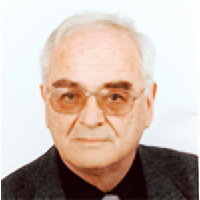Factors affecting muscle strength in cancer patients receiving chemotherapy
Published on: 10th July, 2017
This study aimed to investigate the relationship between muscle weakness and cancer-related symptoms in patients undergoing chemotherapy for hematological malignancies and solid tumors. We recruited hospitalized patients older than 20 years who were receiving chemotherapy. Patients were divided into a solid tumor (n=74) and hematological malignancy (n=80) group. Age, body mass index (BMI), strength and thickness of the quadriceps femoris muscle, serum albumin and C-reactive protein levels, blood hemoglobin concentration, fatigue, psychological distress and pain, and duration of hospitalization were assessed. Eight physical symptoms (fatigue, nausea and vomiting, pain, dyspnea, insomnia, appetite loss, constipation, and diarrhea) were also evaluated. Correlation and multiple regression analyses were conducted to identify factors affecting muscle strength in each group. Muscle strength was associated with fatigue in the solid tumor group and with age, BMI, muscle thickness, albumin and hemoglobin in the hematological malignancy group. Therefore, factors contributing to muscle strength might differ between patients with solid tumors and those with hematological malignancies. In particular, fatigue was an important factor in patients with solid tumors, while anemia was an important factor in patients with hematological malignancies. We therefore suggest that different treatments for muscle weakness might be considered for patients with these cancer types.
The Impact of Adenotonsillectomy on Health-Related Quality of Life in Paediatric Patients
Published on: 25th September, 2018
OCLC Number/Unique Identifier: 7900079688
Objective: To determine the impact of Adenotonsillectomy on Health-related quality of life (HRQoL) in children’s before and after surgery.
Study Design: Prospective, Observational, before and after the trial. 142 children who underwent Adenotonsillectomy were included in the study. Parents were made to fill pre and post-operative questionnaires which were customized from Tonsil and Adenoid health status instrument (TAHSI) and HR-QoL (Health-related quality of life) forms, one day prior to the surgery and 6 months after the surgery respectively, and the results were tabulated and analyzed.
Setting: Tertiary pediatric otolaryngology practices.
Result: Out of the 142 children in the study, 80 were male and 62 were female. Male to Female ratio is 1.3:1. Age group 1-4 years had the highest number of patients while the age group 9-12 had the least. Preoperatively the Mean score of the domain for Sleep disturbances, Physical Symptoms, Emotional distress, Daytime functions, and Caregiver concern was 14.1, 15.83, 6.89, 7.54, and 13.78 respectively. After 6 months of the surgery, the score decreased to 4.65, 4.22, 4.32, 3.1 and 4.2 respectively. This shows a significant improvement in the symptom complex and the quality of the life.
Conclusion: Adenotonsillectomy definitely leads to an improvement in the HRQoL in children as the majority of parents were extremely satisfied with the surgical outcome. Almost all of the parents reported a decrease in Sleep disturbances, Physical Symptoms, Emotional distress, Daytime functions, and Caregiver concern
Predicting physical symptoms through expressions of loneliness and anxiety in individuals utilizing social media during SARS-CoV-2
Published on: 25th April, 2022
The effect of the novel coronavirus (SARS-CoV-2) pandemic has produced significant health concerns negatively impacting individuals. As the ongoing and constantly changing nature of SARS-CoV-2 continues, the unique characteristics of this pandemic trend toward anxiety and loneliness as significant behavioral health outcomes. Furthermore, the SARS-CoV-2 pandemic has significantly impacted the utilization of social media platforms such as Twitter. Utilizing over 1.6 million tweets from approximately 988,760 Twitter users geolocated in Washington state from the University of Pennsylvania’s publicly available Twitter database (from March 2020 to March 2021), this study evaluated the impact of SARS-CoV-2 by using expressions of loneliness and anxiety to predict mental and physical symptoms. Bivariate correlations revealed expressions of loneliness were correlated to trouble breathing while expressions of anxiety were correlated to skin lesions, body aches, flu-like, seasonal cold, trouble breathing, nausea or diarrhea, fever, chills, and cough. Multiple multivariate linear regressions were completed, and a significant regression equation was found in predicting trouble breathing symptoms on expressions of loneliness and anxiety, however, the proportion of variance was 8% of the observed variation in the model. Further implications revealed the importance of understanding mental and physical well-being during a public health crisis as well as the use of social media platforms as primary and supplementary stimuli.
Understanding Burnout Rates for Clinicians and Physical Symptoms of Allostatic Load
Published on: 7th January, 2025
Burnout among clinicians is a pressing concern worldwide, manifesting as emotional exhaustion, depersonalization, and reduced professional efficacy. This article explores the intersection of burnout and allostatic load, the physiological burden resulting from chronic stress, to elucidate the consequences for healthcare providers. Burnout impacts clinicians’ mental and physical health, leading to compromised patient care, reduced job satisfaction, and increased attrition rates. A comparative analysis of recent scholarly works reveals converging evidence on systemic contributors such as excessive workloads, inadequate support systems, and organizational inefficiencies, further compounded by individual vulnerabilities like lack of resilience. These challenges have been exacerbated by the COVID-19 pandemic, which has significantly increased stress levels among healthcare professionals globally. This article synthesizes insights from studies conducted between 2020 and 2024, emphasizing the need for holistic approaches to mitigate burnout. It highlights the physiological underpinnings of allostatic load, including chronic dysregulation of stress-response systems that predispose clinicians to adverse health outcomes like cardiovascular diseases, immune dysfunction, and mental health disorders. To address these issues, the article proposes a multidimensional strategy encompassing organizational reforms, evidence-based interventions, and policy advocacy. Recommendations include reducing administrative burdens, fostering supportive work environments, and integrating wellness programs targeting both systemic and individual stressors. Limitations and directions for future research emphasize the importance of inclusive, longitudinal studies focusing on diverse populations to develop tailored solutions. This comprehensive approach aims to enhance clinician well-being and improve healthcare outcomes globally.
















